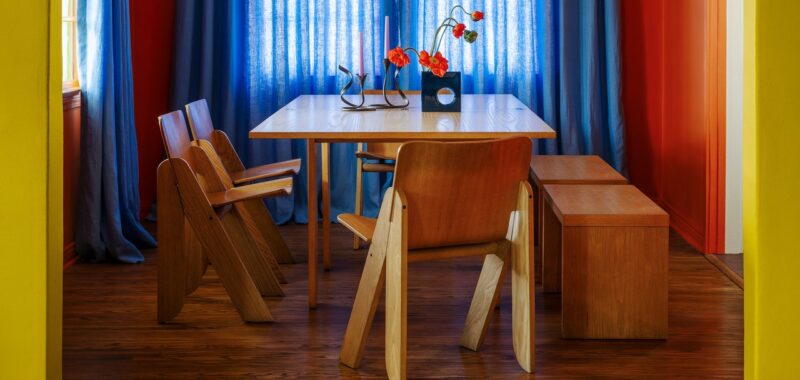A while back, I used an app to figure out if I was a deep winter, cool summer, clear spring, or warm autumn. Like many others, I hoped it would help me avoid colors that wash me out and find those that make me sparkle. If you’re not familiar with the personal color analysis craze, it’s all about finding your perfect palette based on your natural features—skin tone, hair color, and eye color. You can either go the budget route with an app, like I did, or see a professional color analyst who will meticulously drape fabric swatches next to your face and give you a comprehensive list of your most flattering colors.
Professional color analysts use color theory to create harmony and balance between you and your wardrobe. The question remains, since personal style often spills over into interior design, can we use the same principles of color analysis for our homes? I consulted three color analyst professionals to find out. Perhaps this is the solution to our interior design dilemmas—a simple formula to enhance our spaces based on a clear set of parameters.
So what is seasonal color analysis?
The core idea behind seasonal color analysis is to harmonize your natural features with the colors you wear. “Seasonal color analysis in fashion aims to complement skin tone, hair color, and eye color, enhancing personal appearance,” explains Lizzie Heo, founder and director of consultants of the New York City–based color analysis studio Seklab. “In contrast, interior design considers how colors influence space perception, light, and mood.”
Jenny Mahoney, founder and CEO of Lily’s Color Lab, explains that these features include undertone (cool vs. warm), chroma (the intensity of color, whether bright, saturated, or vivid), and contrast level (the difference in value levels—light to dark—between your hair, skin, and eyes). She uses precision-dyed drapes close to a client’s face to study the effects and determine which characteristics shine best.
This is where the seasonal aspect kicks in. Color analysts like Jenny usually assign these combinations of characteristics the names of seasons. For example, a Winter means dark, bright, cool colors look best on someone, typically in high-contrast combinations. Your makeup, clothing, accessories, and hair colors should mirror these seasonal traits.
Jenny argues that interior design can use some of the seasonal color analyst methodologies to create cohesion in a space. “The same optical illusions underlying color analysis apply. You can’t simply mesh any colors together,” she explains. “The eye naturally craves and detects cohesion and coherence. So if you have a palette of warm colors and you throw in a cool color, the eye will notice that something doesn’t harmonize and won’t view this combination as pleasing to the eye.” Liz Ferhati and Annie Sosnov, cofounders of the Color Key, agree that color analysis isn’t just for your wardrobe: “Color analysis at home can absolutely be a helpful tool. Similarly to creating a cohesive wardrobe, a defined color palette can help create that feel in your home.”

